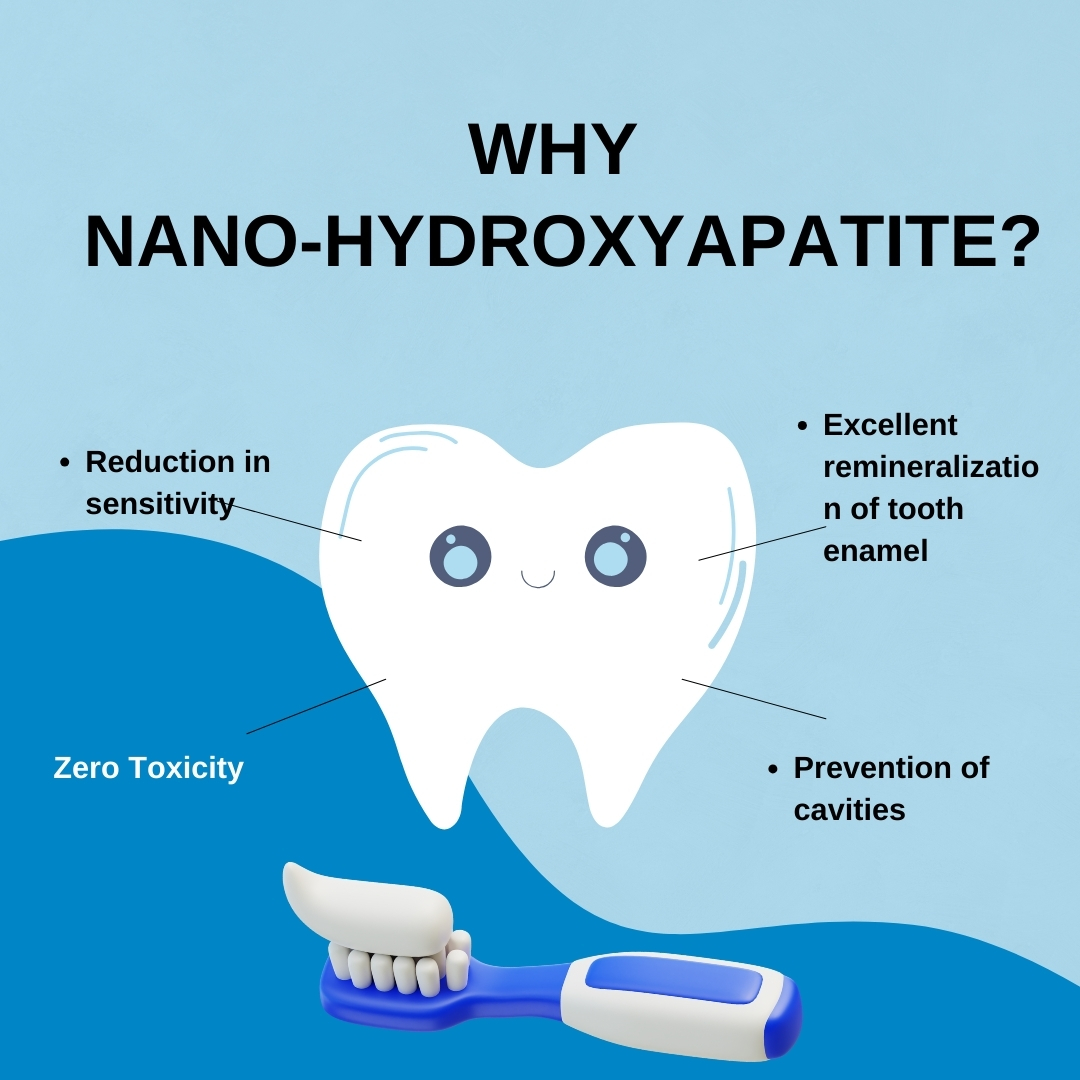
In this information era, one thing is clear: today’s consumers are more informed and selective than ever before. Gone are the days when toothpaste was just about minty breath and bubbles. Now, people want products that are effective, safe, clean, and backed by science. For toothpaste brands and formulators, that means it’s time to talk seriously about nano-hydroxyapatite (nHA).
If you’re in the business of creating oral care products, or even if you’re just curious about the next big thing in toothpaste innovation, pull up a chair. This blog is for you.
Let’s start with what’s happening in the market. More and more people are reading ingredient labels, researching what’s inside their toothpaste, and making purchasing decisions based on what they don’t see i.e., fluoride, SLS, artificial sweeteners, or harsh abrasives. Instead, they’re looking for gentle, effective, and naturally inspired alternatives.
And that’s exactly where nano-hydroxyapatite enters the scene.
To break it down: nano-hydroxyapatite is a lab-made version of the same mineral that makes up the hard part of your teeth, your enamel. But what makes it even more impressive is its nano size (we’re talking one-billionth of a meter). That tiny size is key, because it allows nHA to fill micro-cracks, bond with enamel, and actually help rebuild the tooth surface over time. Yep, you read that right. It doesn’t just protect teeth, it can repair them.
So, for formulators, nHA is more than just an ingredient. It’s a bridge between science and nature, between effectiveness and safety, and between innovation and trust.
Now, don’t get us wrong. Fluoride has had a great run. It has helped to reduce cavities for generations. But it’s also become a bit controversial, especially among parents and wellness-conscious consumers. There’s concern about fluoride ingestion in kids, long-term exposure, and even regulatory tightening in certain countries.
As a result, many people are now actively searching for fluoride-free alternatives that still deliver strong enamel protection. That’s where nHA shines. It offers:
If you think nHA is a fringe ingredient, think again. Japan has been using it in oral care products for over 40 years. Brands like Apagard are mainstream there. Meanwhile, in the U.S. and Europe, you’ve probably seen premium toothpaste brands like Boka, Davids, or Hismile flaunting their nHA-powered formulas.
Search trends show a growing interest in “fluoride-free” and “natural remineralizing” products. Reviews are pouring in. People are loving the results such as less sensitivity, smoother teeth, and a healthier mouthfeel.
In short, consumers are already on board. The only question is—are you?
Today’s shopper isn’t just looking for what works—they want to know it’s safe. That’s why clean beauty and clean personal care have exploded. In oral care, this translates to ingredients that are:
nHA checks every single box. It allows brands to say, “Hey, we’ve got your back and your enamel without compromising your values.”
From a formulation perspective, nHA is surprisingly flexible. It plays nicely with a wide range of base formulas like water-based, anhydrous, and more. It’s stable across various pH levels, and it does its job effectively even at low concentrations (we’re talking 2–10%).
You can adjust particle size, surface treatment, and delivery method to suit your specific product—whether that’s a standard toothpaste, gel, powder, or even a rinse.
So, if you’re a product developer worried about compatibility or complexity, don’t be. nHA isn’t just effective; it’s also efficient.
Let’s be honest. People are willing to pay more for products that work and feel luxurious. nHA delivers both.
Adding nHA to your formula elevates your brand. It tells consumers: “This isn’t just another toothpaste. This is science-meets-nature, thoughtfully designed for your wellbeing.”
And that’s exactly the kind of product that stands out on the shelves and online.
We’re at a moment where toothpaste is more than a hygiene essential, it’s part of a broader wellness routine. People want products that align with their lifestyles, their health goals, and their values.
Nano-hydroxyapatite isn’t a trend, it’s a shift.
A shift toward biomimetic science. Toward clean and conscious formulations. Toward transparency, trust, and transformation.
If you’re in the business of innovating oral care, now’s the time to rethink your approach. Because while the rest of the industry sticks with fluoride, your brand could be pioneering the next chapter of dental health with nano-hydroxyapatite leading the way.